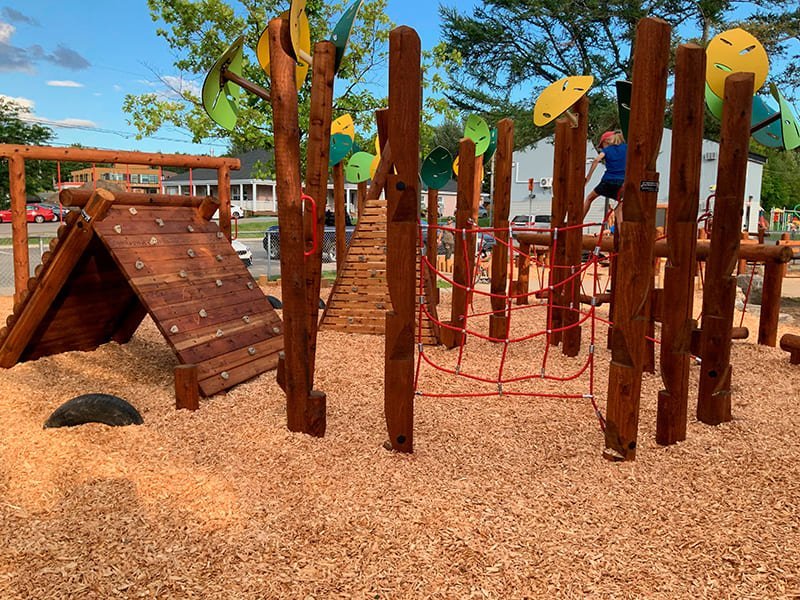With the increase in technology and urban planning, children’s development must balance modern life and connection with nature. Playgrounds have always been spaces designed for children to enjoy outdoor activities; however, two approaches exist to seek that approach with nature: Natural Playgrounds (inspired by nature) and the Playgrounds First Nation Specials (inspired by indigenous cultures). This article will explore the differences and advantages each offers children to connect with nature.
Natural Playgrounds: Beyond Structure
Natural playgrounds use natural elements like logs, rocks, plants, and water to provide a more authentic, close-to-nature play experience. These playgrounds offer a more organic and realistic environment, allowing children to directly explore and experiment with their surroundings. The play structures promote creativity, imagination, and physical development while fostering a deeper connection with nature.
Advantages of Natural Playgrounds
One of the main advantages of this type of playground is sensory stimulation, as the natural elements allow children to experience different textures, smells, and sounds, stimulating their sensory development and connection with the natural environment. They encourage creativity by not having traditional structures where children can create their own play and use their imagination to explore and discover. Additionally, it benefits the child’s physical development, as jumping, climbing, and running encourage the development of motor skills and coordination.
Playgrounds First Nation Specials: Culture and history at play
Playgrounds First Nation Specials are playgrounds designed with the culture and traditions of local indigenous communities in mind. Culturally inspired elements, such as sculptures, totems, symbols, and traditional designs, are incorporated to provide a unique experience that connects children to indigenous history and knowledge. These playgrounds can be an ideal place to promote education and culture through educational programs, partnerships with schools, cultural events, elements that represent history, and other activities where children can learn about and connect with the past.
Advantages of First Nation Specials Playgrounds
Among the many benefits of the Playgrounds First Nation Special is the emotional connection they generate. By interacting with elements that represent the indigenous culture, children can establish a personal and emotional connection with the community, which allows them to develop a sense of identity and understanding; this gives them a great cultural value and leaves many lessons because these playgrounds offer an opportunity for children to learn and appreciate the culture and history of indigenous communities, encouraging respect and diversity. They also help to preserve heritage because by incorporating traditional elements in the playgrounds, they promote the preservation of indigenous culture and prevent it from being lost over time.
Which is better for children to contact nature?
Natural Playgrounds and First Nation Specials have significant advantages when connecting children with nature. Natural Playground offers a more direct and authentic approach to natural elements, promoting creativity and sensory connection. On the other hand, Playground First Nation Special provides a cultural and emotional connection by incorporating indigenous elements and symbols, fostering respect and appreciation for diversity. Ultimately, the choice between the two approaches will depend on each community’s individual needs and preferences and how you seek to foster children’s connection with nature and their cultural environment, both excellent options to fulfill this purpose.
What did you think of this topic? Do you want to know more about these types of playgrounds?
If you want a natural playground or a playground First Nation Special for your project, community, daycare, school, or public park, contact us by visiting the following link.
